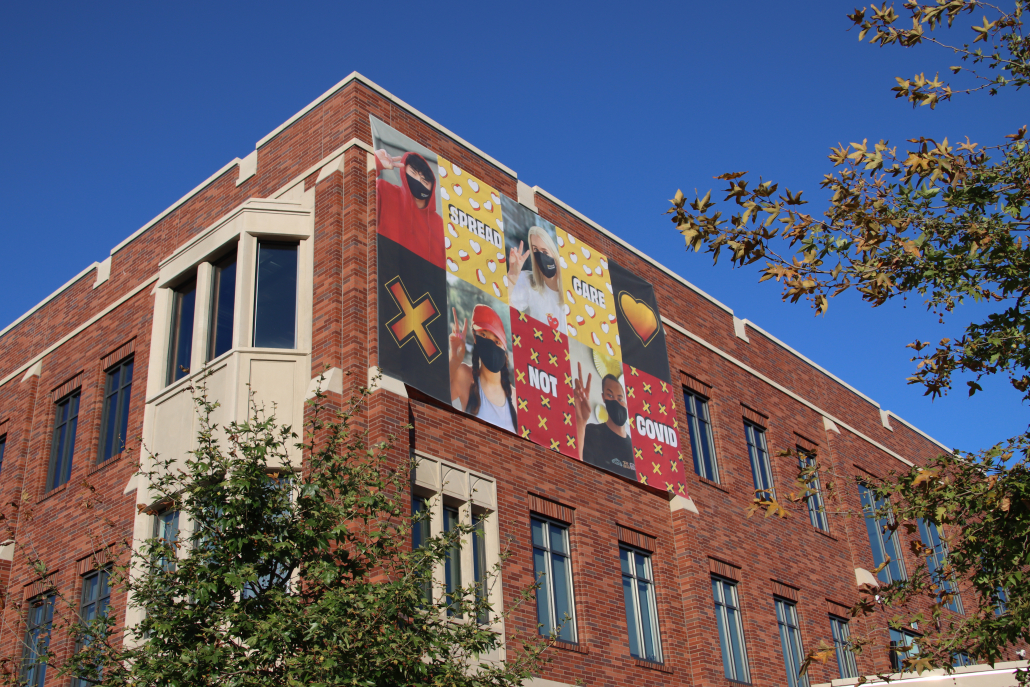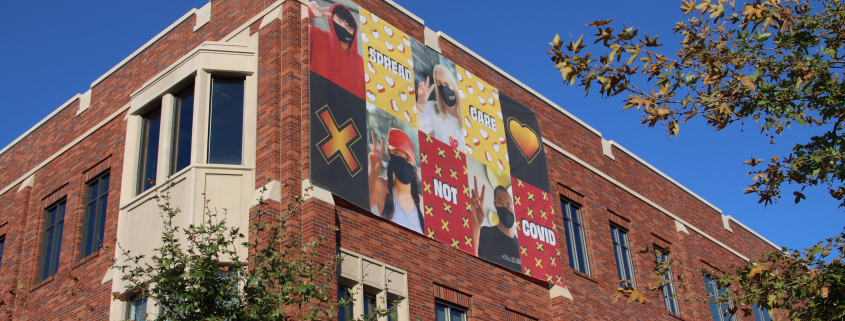Slight increase in cases after fall recess

USC is experiencing a “small uptick” of positive coronavirus cases among students this week, but the data is too preliminary to connect it as an emerging trend from the fall recess, Chief Health Officer Dr. Sarah Van Orman said in a student media briefing Tuesday.
From Oct. 10 through Oct. 16, 25 new student cases of the coronavirus appeared on campus, according to Van Orman. While the number of confirmed cases continued its eight-week decline, Van Orman attributed student travel during the fall recess as a possibility for the slight increase.
“We only have two days worth of data, [the positivity rate] is up above 0.1% this week, but we see some variation, so I wouldn’t want to say it’s definitely a trend yet — but we are seeing more cases today and yesterday than we have in previous weeks,” Van Orman said.
With colder weather and the approaching holiday season, Van Orman expects more students to congregate indoors. She highlighted the extent of the risks associated with indoor settings at parties in housing or nightclubs and said students should shift events outdoors when possible.
Van Orman said Halloween poses an increased risk of a rising case because many congregate indoors and neglect social distancing practices. She recommended mask wearing as a tool to “manage” potential spread.
“[It’s] really important for people that, if you’re gathering in larger groups, the degree to which you could do it outdoors is better … [The coronavirus] is an aerosolized virus, so if you think of the environment of being at a party or indoor gathering where people are talking really loudly or standing close together, it is the perfect environment for coronavirus to spread,” Van Orman said.
According to the Centers for Disease Control and Prevention, California — with a positivity rate that has declined to 1.9% — is the only state that improved to a “moderate” level of transmission. Van Orman said she would like to see no hospitalizations and deaths stemming from the coronavirus in the Los Angeles community.
“California has some of the strictest public health rules, but some of the lowest case [levels], and I think those two things are completely related,” Van Orman said. “Our goal would be to not have cases and actually not have any transmission within our community.”
Van Orman said Student Health is working with the Los Angeles County Public Health Department to smoothly navigate upcoming travel and holiday periods without experiencing a “winter surge.”
Student Health said in a briefing on Oct. 13, 95% of all students, faculty and staff have completed their vaccine series. In addition, 2% of students have received a personal or medical exemption and the remaining three percent are in between doses.
L.A. County and statewide policy makers are ramping up efforts to implement vaccine requirements to avoid another coronavirus surge.
On Oct. 1, Governor Gavin Newsom announced the nation’s first coronavirus mandate for all K-12 schoolchildren. According to the Los Angeles Times, some families chose to keep their children home from school in conjunction with a statewide protest against the governor’s mandate Monday. The California Department of Public Health currently requires 10 different vaccines for students who wish to attend public schools, and will add the coronavirus vaccine once it receives full approval from the Federal Drug Administration.
On Oct. 6, Mayor Eric Garcetti signed an ordinance into law that will require residents in L.A. County to present proof of vaccination before entering most indoor restaurants, bars, gyms, shopping centers, entertainment venues and personal care establishments.
“It would be wonderful if we could get our community vaccination rates up, where we actually won’t have another surge,’’ Van Orman said. “From a county perspective, that’s what they’re trying to aim for, is to not have a winter surge, and that is also what we’re aiming [for] USC to not have a winter surge.”
Van Orman said the “data is really clear” between the relationship of coronavirus transmission among universities with and without vaccine mandates. Vaccine mandates are proven to “control infection” and Student Health isn’t seeing any evidence of outbreaks connected to breakthrough infections.
“At universities that do not have vaccine mandates, with 60-70% [of those vaccinated], we’re seeing cases, outbreaks and spread, so vaccine mandates and being a fully vaccinated university does exactly what we want it to do: protects people, protects our community and lets us get back to normal,” Van Orman said.

